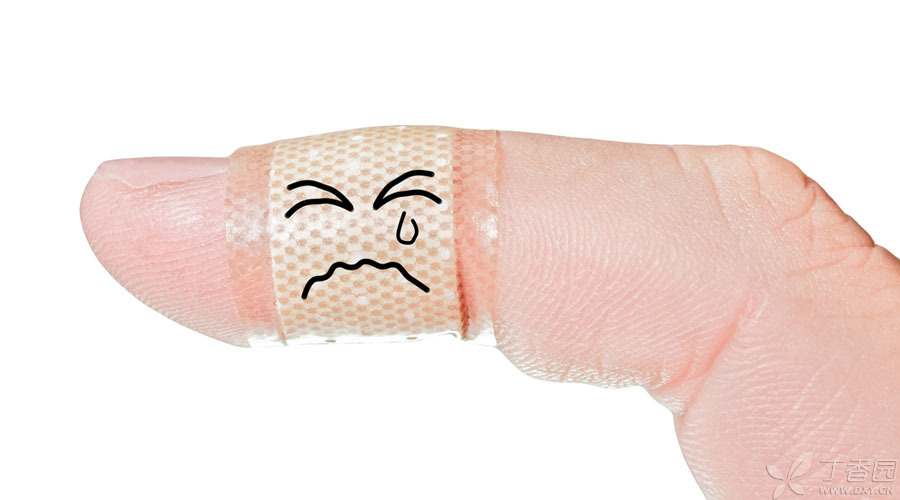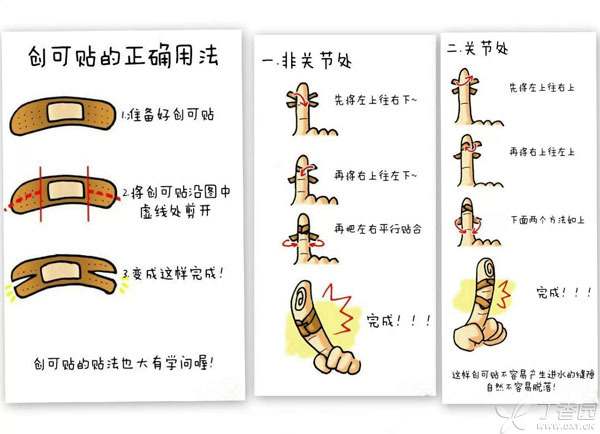
According to a report by the Yangzi Evening News, Wen Wen, a four-year-old girl in Suzhou, faced amputation because the bandage was too tight, resulting in poor blood flow and necrosis of the end of her finger after her finger was bandaged with a band-aid.
This is a family tragedy. It is really painful to see such news.
Band-Aids are found in almost every family’s medicine cabinet. They are regular items at home. Everyone has used them, but not everyone can use them. In order to avoid similar tragedies, I think it is necessary to popularize the correct usage of Band-Aids.
Should I use Band-Aids when I am in what?
On the Band-Aid manual, we can see the following words:
It is used for minor trauma, abrasion and other affected parts, and is helpful to prevent bacteria and foreign bodies from invading, maintain wound hygiene and prevent wound infection.
The special waterproof and bacteriostatic function can effectively prevent infection caused by bacteria invading wounds in water and accelerate wound healing.
Obviously, Band-Aids are not [universal adhesive tapes].
1. Role of Band-Aids
It only has the following wound protection effects:
- Waterproof, bacteria-proof and foreign matter-proof
2. Band-Aids for Wounds
Band-Aids are only applicable to small wounds, and the [small wounds] here must meet the following conditions:
- The wound is neat and bleeding is not much. Suture is not required for superficial wound.
3. Treatment before use
In order to effectively prevent infection, the following operations must be done before using Band-Aids:
- Fully rinse the wound with clean water or normal saline to ensure that the wound has been rinsed clean and disinfected with iodophor.

Band-Aids cannot be used at these times.
1. Animal scratches and bites
Band-Aid is not suitable for scratches of pets such as cats and dogs.
The scratches of cats and dogs should expose the wounds and cannot be bandaged. They should be cleaned with soap solution in time and then go to the hospital to be vaccinated with rabies vaccine.
2. Deep stab injury
Band-Aid is also not suitable for rusty needles, nails and other deep wounds. Such wounds should also be exposed to hospital for deep cleaning and tetanus vaccine to prevent tetanus.
3. Infected festering wounds
In addition, if the wound lasts for more than 24 hours and the wound has secretions such as pus and running water, it is not suitable to use Band-Aid, but it is necessary to use aseptic breathable gauze to wrap the wound after smearing antibacterial ointment, otherwise the wound infection will be aggravated due to poor drainage caused by Band-Aid wrapping.
What should I pay attention to when using Band-Aids?
- The use time of Band-Aids should not be too long. It usually needs to be replaced daily, The longest time should not exceed two days. Attention should be paid to the wound surface during replacement. Once the wound becomes red, swollen and festering, it must be stopped. And see a doctor in time. Band-aid can’t be wrapped too tightly when using, too tight easily leads to finger blood flow is not smooth. The tragedy of skin and muscle necrosis at the tip of the finger in the news at the beginning of the article is not caused by Band-Aid, but everyone should take it as a warning. In order to prevent Band-Aid from falling off, the sticking method of Band-Aid on the finger part is also exquisite. Look at the picture and talk, I won’t say much.

If Grandma Wen Wen pasted it like this, she would not need rubber bands to fix it and tragedy would be avoided.
Finally, special reminder: As infants’ skin and muscles are delicate, it is not recommended for children under 2 years old to use Band-Aids, and the bandaging should not be too tight under any circumstances.
Editor: BruceLi
Author: Ji Lianmei
The article was reprinted by Clove Garden authorized by the author.
Source: shutterstock.com, provided by the author
